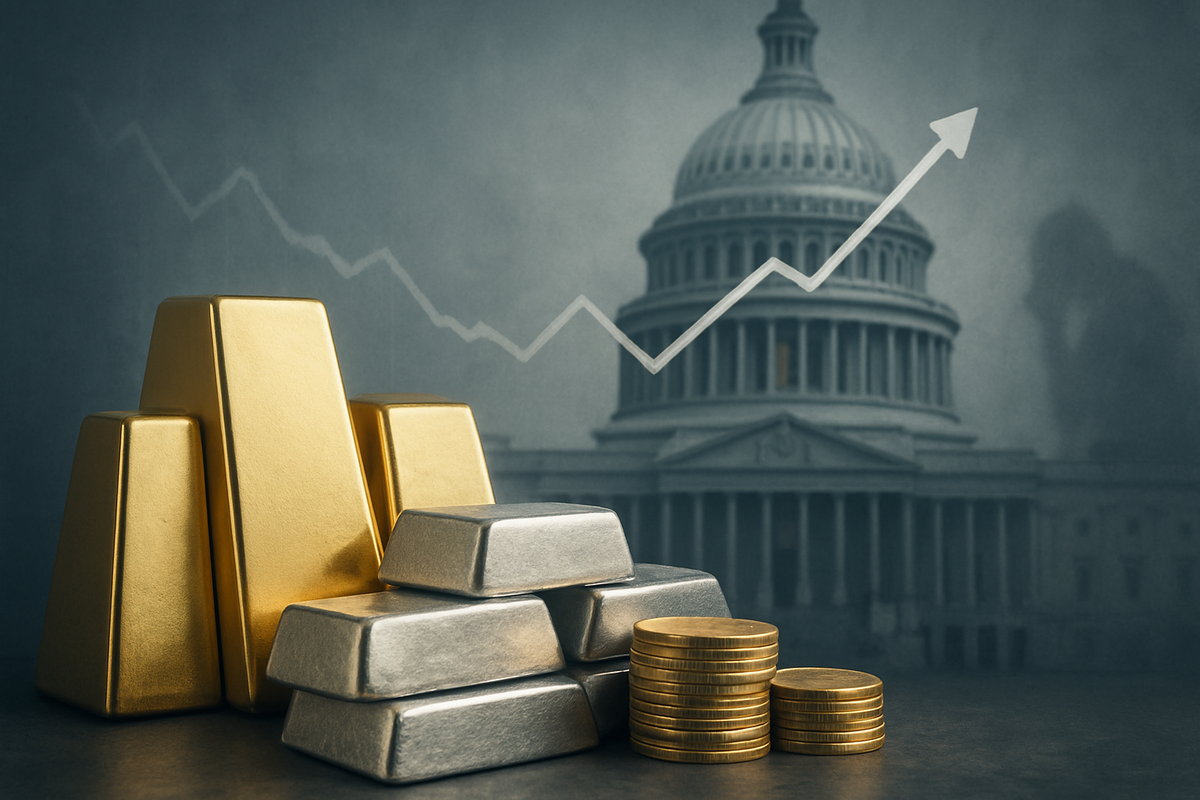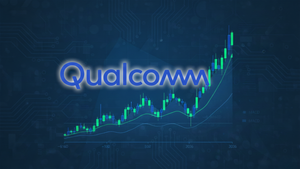
The financial markets are currently navigating a turbulent sea, marked by an extraordinary rally in gold and silver prices. This surge in precious metals comes as U.S. politicians inch closer to resolving the longest government shutdown in the nation's history, yet simultaneously grapple with the worst consumer sentiment seen in years. This complex interplay of political relief and economic anxiety signals a market deeply unsettled, where investors are increasingly seeking the safety of tangible assets amidst a backdrop of profound uncertainty.
The immediate implications of this confluence are multifaceted. The rally in gold and silver confirms a deep-seated economic unease that transcends the immediate political resolution. Investors are prioritizing capital preservation, driving a "flight to safety" into assets perceived as stable stores of value. This also suggests that the market is anticipating further monetary policy intervention, likely in the form of interest rate cuts by the Federal Reserve, to counteract the economic weakness revealed by poor sentiment and the shutdown's lingering effects. While a shutdown resolution typically brings a sigh of relief to broader equity markets, the concurrent precious metals rally indicates that underlying economic fragilities remain a significant concern, leading to heightened volatility in other asset classes.
The Unfolding Drama: Precious Metals Rally, Political Gridlock, and Waning Confidence
The rally in gold and silver has been nothing short of spectacular. On Monday, November 10, 2025, gold prices jumped over 1% on the Multi Commodity Exchange (MCX), with December gold futures trading 1.12% higher at ₹1,22,426 per 10 grams. In U.S. trading, December gold was up $93.30 at $4,103.10, marking a two-week high and pushing above key resistance levels. Since the beginning of 2025, gold futures have risen over 45% by October 1, and more recently, briefly surpassed $4,100 per ounce. Silver has seen an even more significant percentage jump, with futures up over 59% since the start of 2025, trading at nearly $48 per ounce by October 1. On November 10, MCX Silver December contracts surged 1.93% to ₹1,50,579 per kg, with U.S. December silver prices up $1.897 at $50.055, reaching a three-week peak and clearing resistance at $49.30.
This rally is primarily fueled by deepening uncertainty surrounding the U.S. government shutdown, which began at 12:01 a.m. EDT on October 1, 2025, after Congress failed to pass appropriations legislation. This marked the government's first shutdown in almost seven years and has since become the longest in U.S. history, extending for over 40 days as of November 10, 2025. The core disagreement centered on Senate Democrats' opposition to Republican appropriations bills that excluded an extension of Affordable Care Act (ACA) subsidies.
Key players in the unfolding resolution include President Donald Trump, who indicated a resolution was "very close," and Senate Democrats, particularly moderate senators like Jeanne Shaheen, Maggie Hassan, and Angus King, who played a crucial role in brokering a bipartisan deal by dropping their demand for extended healthcare subsidies. This concession paved the way for a procedural vote in the Senate on November 10, which saw a 60-40 vote to advance a temporary funding bill. While this bill would fund government operations until the end of January, its passage in the House of Representatives, led by Speaker Mike Johnson, is not yet guaranteed.
Initial market reactions beyond precious metals have been mixed. Global stock markets rallied in response to the news of a potential shutdown resolution, with U.S. stock indexes set to open solidly higher. U.S. Treasury yields experienced a modest uptick, and the U.S. dollar index also saw a slight rise, though it had previously softened, lending support to bullion prices. The ongoing resolution efforts are expected to restore the flow of U.S. economic data, which could revive expectations for a Federal Reserve interest rate cut in December, shifting market focus to the deteriorating U.S. fiscal outlook and rising bond yields.
Corporate Fortunes: Winners and Losers in a Volatile Market
The current market dynamics present a clear divergence in fortunes for public companies. The precious metals rally creates significant winners, while the lingering economic uncertainty and poor consumer sentiment pose challenges for others.
Precious Metals Mining Companies are poised for substantial gains. Companies like Newmont (NYSE: NEM), Barrick Gold (NYSE: GOLD), and Agnico Eagle Mines (NYSE: AEM), as well as silver miners such as Pan American Silver (NASDAQ: PAAS) and First Majestic Silver (NYSE: AG), will see increased revenue and potentially expanded profit margins due to the higher prices of their output. Royalty and streaming companies like Wheaton Precious Metals (NYSE: WPM) and Royal Gold (NASDAQ: RGLD) also stand to benefit immensely, as they acquire metals at fixed, low prices and sell them at higher market rates.
The resolution of the government shutdown offers a lifeline to companies reliant on federal contracts or regulatory approvals. Government contractors, who faced delays and postponed payments during the shutdown, will see work resume and payments flow. Industries requiring federal regulatory oversight, such as pharmaceuticals and environmental services, will also benefit from the alleviation of bottlenecks in permitting and approval processes. Furthermore, local businesses in government hubs, which experienced reduced consumer spending due to furloughs, will see a boost as federal employees receive back pay. Historically, equity markets, particularly technology and cyclical sectors, tend to rally as political risk premiums unwind post-shutdown.
However, poor consumer sentiment casts a long shadow over companies in consumer discretionary sectors. Retailers of non-essential goods and services, such as Target (NYSE: TGT) and Best Buy (NYSE: BBY), are highly vulnerable to reduced discretionary spending. Automakers, travel and hospitality companies, restaurant groups, and entertainment providers are also likely to face headwinds. Conversely, consumer staples companies like Procter & Gamble (NYSE: PG) and Colgate-Palmolive (NYSE: CL), which provide essential goods, are expected to show resilience. Discount retailers like Grocery Outlet Holding Corp. (NASDAQ: GO) may also thrive as consumers become more price-sensitive.
The interplay of these events is crucial. While the shutdown resolution might temper some safe-haven demand for precious metals, persistent weak economic data and the prospect of Fed rate cuts could continue to support gold and silver. For consumer-facing businesses, even with the shutdown resolved, if deep-seated consumer pessimism persists due to concerns over inflation and broader economic health, overall discretionary spending may remain subdued.
Wider Implications: A Shifting Economic Paradigm
This unique confluence of a precious metals rally, a government shutdown resolution, and plummeting consumer sentiment signifies more than just a fleeting market event; it points to a potentially shifting economic paradigm. The sustained demand for gold and silver underscores a persistent trend where these metals act as crucial safe havens during periods of macroeconomic and geopolitical instability, a pattern observed during past recessions and crises. This environment of "macro uncertainty" is fueled by geopolitical tensions, doubts about monetary policy, and concerns over fiscal credibility.
The contradictory market signals—a rally in safe-haven assets alongside a relief rally in equities—highlight a nuanced investor sentiment. While the immediate political gridlock is being addressed, deeper anxieties about economic stability, potential recession, and persistent inflation continue to drive hedging strategies. This is further amplified by poor consumer sentiment, which has historically preceded economic slowdowns, as worried consumers tend to reduce spending.
Monetary policy expectations are a key driver. The weakening U.S. economy, evidenced by declining consumer confidence and recent job losses, intensifies pressure on the Federal Reserve to implement interest rate cuts, possibly in December. Lower rates typically boost the attractiveness of non-yielding assets like gold and silver. This anticipated shift in monetary policy is a critical factor supporting the precious metals rally.
Broader industry trends suggest a sustained demand for safe-haven assets and a potential K-shaped sentiment, where optimism among top stock owners contrasts sharply with widespread pessimism among other demographics, highlighting uneven economic impacts. The U.S. dollar's dynamics, with a weakening trend, also enhance the purchasing power of international buyers, further supporting the gold and silver rally. For silver, its dual role as both a precious and an industrial metal (benefiting from demand in renewable energy, EVs, and data centers) provides additional resilience.
Regulatory and policy implications are significant. The persistent economic weakness is placing increased pressure on the Federal Reserve to adjust monetary policy. The recurrent nature of government shutdowns also highlights ongoing fiscal policy challenges and congressional gridlock, potentially exacerbating national debt concerns and contributing to market instability. This elevated market volatility may also lead to calls for enhanced regulatory scrutiny to ensure financial market stability.
Historically, gold and silver have proven reliable stores of value during turmoil. Past government shutdowns have typically resulted in short-term economic slowdowns followed by recovery, but prolonged shutdowns increase the risk of more significant damage. A widespread decline in consumer sentiment has also historically been a strong indicator preceding economic recessions, serving as a critical "temperature check" of the economy.
The Road Ahead: Navigating Uncertainty
Looking ahead, the financial markets and public companies face a period of continued volatility and adaptation.
In the short-term, while the resolution of the government shutdown may provide a brief uplift to investor confidence, the underlying concerns of poor consumer sentiment and a potentially slowing economy suggest that this relief might be temporary. Precious metals prices are likely to remain supported by lingering economic uncertainty and the increased probability of Federal Reserve interest rate cuts. Consumer spending may see a modest rebound as furloughed federal workers receive back pay, but the overarching poor sentiment suggests continued caution. Companies like Amazon Web Services (NASDAQ: AMZN) and Microsoft (NASDAQ: MSFT), which provide cloud infrastructure to federal agencies, may see a resumption of stalled projects.
The long-term outlook suggests that the combination of persistent poor consumer sentiment and the lingering economic effects of the shutdown increases the risk of a broader economic slowdown or even a recession. Gold and silver are expected to maintain their strong appeal as safe-haven assets, with long-term forecasts for gold suggesting a potential to reach $5,000 per ounce by 2026, and silver's industrial applications bolstering its long-term growth prospects. A fundamental shift in investment strategies could emerge, favoring value stocks, dividend-paying equities, and less speculative assets.
Strategic adaptations will be crucial for public companies. Rigorous cost management, operational efficiency, and revenue diversification will be paramount. Businesses heavily reliant on federal contracts should explore commercial markets, and those dependent on raw materials should optimize supply chains and consider hedging strategies. Financially strong companies with robust balance sheets may find opportunities for strategic mergers and acquisitions at lower valuations.
Market opportunities may arise in defensive sectors like healthcare and consumer staples, as well as in precious metals and related mining companies. Intermediate-term corporate bonds could offer attractive yields, and U.S. exporters may benefit from a weaker dollar. However, challenges persist, particularly for consumer discretionary spending, high-growth/tech stocks facing valuation scrutiny, and inflationary pressures.
Potential scenarios range from a "soft landing," where a mild economic slowdown avoids a deep recession, to a "recession" scenario, exacerbated by persistent political gridlock and a deeper tech sector correction. An "increased geopolitical/fiscal risk" scenario could see gold and silver continue their significant ascent.
Wrapping Up: A Call for Vigilance
In summary, the current economic environment is a tug-of-war between short-term political relief and deep-seated economic anxieties. The extraordinary rally in gold and silver prices serves as a potent barometer of investor apprehension, signaling a prevalent risk-off sentiment and a desire to hedge against future uncertainties. The longest government shutdown in U.S. history underscores persistent legislative gridlock and its tangible, negative impact on economic activity and public confidence. Meanwhile, plummeting consumer sentiment, driven by fears for personal finances and the broader economy, suggests that a significant portion of the populace feels vulnerable, potentially leading to reduced spending and a slowdown in economic growth.
Moving forward, investors must remain exceptionally vigilant. The final resolution of the shutdown, the subsequent release of crucial economic data (especially the delayed non-farm payrolls report), and the Federal Reserve's stance on interest rates in December will be paramount. Consumer spending trends, particularly during the upcoming holiday season, will offer critical insights into economic resilience. Furthermore, ongoing developments in fiscal policy, debt sustainability, and corporate earnings will provide a clearer picture of the market's trajectory.
The lasting impact of these events could be a fundamental recalibration of investor strategies, favoring tangible assets and defensive sectors over speculative growth. The divergence in sentiment between high-income stock owners and the general populace also points to growing economic inequality, a factor that could have long-term societal and political ramifications. In essence, while a temporary political truce might be imminent, the underlying economic anxieties reflected in weak consumer sentiment and the flight to safe-haven assets suggest that significant headwinds remain. Investors will need to stay agile and responsive to both policy shifts and economic realities in the months ahead.
This content is intended for informational purposes only and is not financial advice





